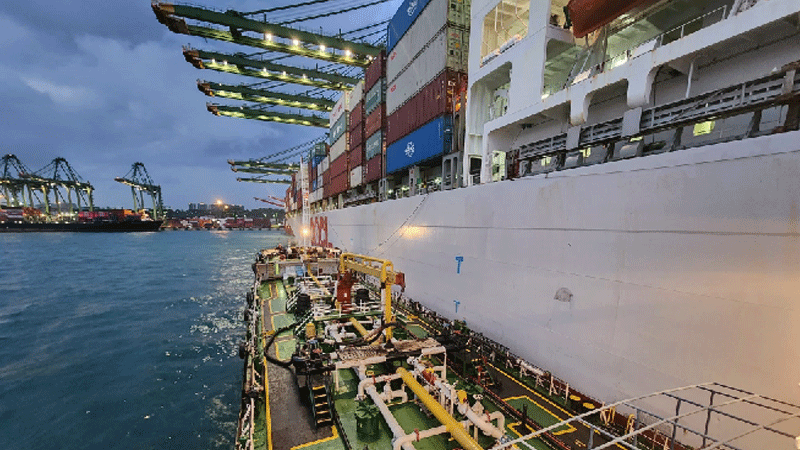Analysts point out that data shows the “peak season” for the U.S. trade lane occurred in July this year amid a “rush to ship” trend. At the same time, although spot rates on the U.S. trade lane have fallen for ten consecutive weeks, signs of stabilization are emerging. Two prominent analysts predict that the U.S. trade lane market may experience another mild “boom” in September.
Renowned shipping analyst Lars Jensen notes that U.S. container imports will see a slight increase in the near future. The U.S. trade lane market may witness a mild “boom” in September.
However, due to ongoing market uncertainties, many U.S. shippers remain hesitant at present.
He points out that these hesitant shippers now face a time-sensitive dilemma. They cannot wait much longer, or their goods will not reach stores in time for the holiday season. Additionally, they must account for the Golden Week, during which Chinese factories typically shut down in the first week of October.
He explains that this logic is somewhat similar to that of May, and the likely outcome is that shippers are now forced to make a decision: ship goods now under the new known tariffs, or risk not being able to stock their desired products for the holidays. Many may opt for the former and begin increasing shipments in the coming weeks.
“Off-season” May Not Be “Off”
Meanwhile, Peter Sand, Chief Analyst at Xeneta, states, “While we do not expect a ‘normal’ peak season, we cannot rule out the possibility of a delayed off-season.”
He notes, “We will see some rate increases from October to November. This will mainly impact the short-term market, and some long-term contract rate payments may be affected by the ‘successful’ implementation of PSS (Peak Season Surcharge).”
As the effects of Trump 2.0’s “reciprocal tariffs” gradually materialize, industry attention remains firmly focused on trans-Pacific trade.
In fact, both the Shanghai Containerized Freight Index (SCFI) and Drewry’s World Container Index (WCI) show that U.S. trade lane rates continue to decline.
Hind Chitty, Senior Analyst at Drewry Supply Chain, states that although rates are falling, the pace of decline in spot rates has slowed, continuing the trend of recent weeks.
She points out, “Liner companies are attempting to stabilize the market by managing capacity through blank sailings, but this offers limited support amid trade flow fluctuations, tariff changes, and network realignments.”
“The decline in spot rates has slowed. On August 14, the WCI index fell 3% month-on-month to $2,350.”
Regarding future prospects, unlike Peter Sand, she largely believes another wave of rate increases is unlikely. Hind Chitty adds, “Upcoming vessel deliveries could exacerbate fleet overcapacity.”
On how liner companies will address their challenges, Peter Sand states their options are “known”: blank sailings; slow steaming; realigning vessel deployments and sizes.
He adds, “Lastly, there’s scrapping. This is not expected to meaningfully impact the 2025 market balance—too small and too late—but by 2026, anticipated scrapping will be significant. The bigger question is how effective these strategies will be; as we currently see strong demand, yet rates continue to fall on most trade lanes.”
Xeneta Acquires eeSea
Meanwhile, it is worth noting that on August 18, Xeneta announced its acquisition of maritime supply chain data company eeSea.
Xeneta states that integrating eeSea’s global sailing schedules, transit times, and schedule reliability data with its existing freight rate data will enable shippers to manage freight contracts and suppliers based on service levels, not just cost.
Xeneta CEO Patrik Berglund says, “Today marks a key milestone for Xeneta; partnering with eeSea further advances our shared mission to enhance freight rate transparency and efficiency. Our combined data sources and coverage will provide customers with more actionable insights to control freight costs and delivery reliability.”





